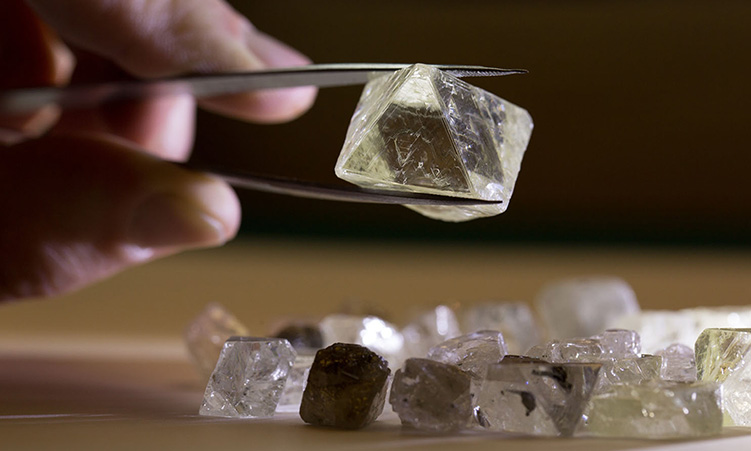Namibia made N$11.9 billion from rough diamond exports last year, a continued pattern of decline in revenue from the sector.
According to the Bank of Namibia’s annual report, this is a 32.9% decrease, primarily due to lower export volumes and reduced prices.
“The drop in earnings was mainly driven by weakened global demand from key markets like the United States (US) and China, alongside lower realised prices,” the report reads.
Additionally, the sector faced competition from laboratory-grown diamonds and an oversupply in the midstream market.
Another industry that saw a decrease in revenue exports is uranium. This is despite an increase in the price of uranium on the international market.
“In the uranium sector, export revenues fell by 3.3% to N$14.5 billion in 2024,” the report says.
It says the rise in uranium prices reflects the growing global demand for nuclear energy as an alternative to carbon-emitting power sources.
However, other mineral exports increased by 28.4% to N$19.4 billion, driven largely by a rise in gold exports.
“Gold export receipts increased significantly by 30.4%, reaching a record N$14.6 billion in 2024,” the report states.
The increase was a result of higher volumes of high-grade gold ore being mined and strong international gold prices, which rose by 22.9%.
Demand for safe-haven assets, spurred by economic uncertainty and geopolitical tensions, contributed to the price hike.
Non-mineral exports such as food and live animal exports rose by 1.8% to N$4.6 billion, primarily due to weaner and grape exports.
“Increased marketing efforts, especially during drought conditions, led to a rise in weaner export earnings by 11.6%,” the report reads.
Additionally, grape exports to Europe grew by 13.1%.
Manufactured exports, on the other hand, experienced a decline of 3.8%, dropping to N$24.7 billion.
“This decrease was largely driven by a 24.4% fall in earnings from polished diamonds.”
The central bank says the drop is due to reduced demand from markets like China and the US, and an oversupply in the midstream market.
Stay informed with The Namibian – your source for credible journalism. Get in-depth reporting and opinions for
only N$85 a month. Invest in journalism, invest in democracy –
Subscribe Now!










